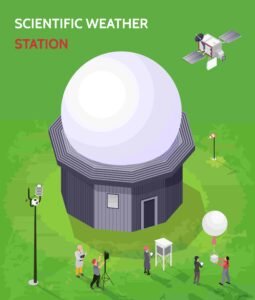On April 28, 2025, an extraordinary power failure rattled the Iberian Peninsula. As 15 gigawatts of solar energy inexplicably disappeared from the grid, Spain and Portugal confronted one of the most significant blackouts in their history.
Public transport came to a standstill, flights were canceled, and numerous businesses closed their doors. Amidst this turmoil, however, research centers have emerged as unexpected bastions of resilience.
In spite of widespread chaos, research facilities throughout the impacted areas successfully protected essential data, equipment, and biological specimens.
Their rapid response and strong contingency plans not only ensured the continuity of scientific work but also highlighted the significance of readiness in technologically advanced environments.
The Initial Effects of the Power Outage
The blackout, which persisted for nearly 24 hours in certain regions, instigated immediate anxiety. While many anticipated the worst, Spanish and Portuguese officials quickly dismissed cyber-attacks and adverse weather as potential causes.
Instead, experts pointed to the inherent weaknesses within the region’s energy infrastructure. With the Iberian grid largely disconnected from the rest of Europe, a mere five-second loss of solar power initiated a chain reaction of energy instability.
Energy specialist Julio Melero from the University of Zaragoza noted that this incident mirrored larger systemic challenges.
“This created a problematic scenario in the grid, linked to fluctuations in voltage and frequency,” he elaborated. The scale of the blackout tested the limits of national infrastructure, while simultaneously assessing the resilience of scientific institutions.
Research Centers Respond with Precision and Readiness
When the power went out, vital institutions like the Alba synchrotron and the Barcelona Supercomputing Center (BSC) continued to function.
With the aid of diesel generators and battery backups, critical systems remained operational. Caterina Biscari, director of Alba, mentioned that the facility’s energy independence for 24 hours allowed for a gradual restart.
“We deactivated any non-essential systems,” she said, “then reactivated the particle accelerator and electron beam at 2 p.m. the following day.”
At BSC, the supercomputer MareNostrum 5 was protected by uninterruptible power supplies, ensuring that crucial research data remained secure. The center resumed full operations after confirming the government’s assurances regarding grid stability.
Meanwhile, biological research facilities like CNIO in Madrid activated robust diesel generator systems to safeguard sensitive samples and equipment.
Fernando Peláez, acting director of CNIO, highlighted the importance of these actions: “It was critical for refrigerators, freezers, cell culture incubators, and vivariums to stay powered.”
These precautions not only shielded irreplaceable research materials but also averted substantial financial and scientific setbacks.

Human Ingenuity During a Crisis
While backup systems were vital, human initiative was equally crucial. Technical teams across various institutions responded quickly and effectively.
At CIQUS in Santiago de Compostela, Director Diego Peña recounted how staff promptly shifted to minimal operation mode, focusing on essential systems such as NMR spectrometers and internet connectivity.
Despite being off-grid until 3:30 a.m., the center maintained communication, and success made achievable by their proactive preparations.
similarly, researchers attending a conference in Faro, Portugal, faced sudden darkness mid-lecture. João Borges from CICECO described how, instead of panicking, attendees transformed the disruption into a unique opportunity.
“We decided to have lunch and improvise an informal poster session,” Borges said, showing how flexibility and community can salvage scientific engagement even in blackout conditions.
Lessons in Resilience and Collaboration
In hindsight, the success of these research center during the crisis was no accident. Their resilience was built on layers of preparation, from emergency power systems to coordinated crisis management.
Institutions like ICIQ in Tarragona credited autonomous power supply systems and preventive measures with preventing serious losses.
Imma Escofet Miquel, managing director, noted, “These systems restricted serious losses.”
Another key factor was governmental support. Biscari emphasized how regional and national bodies reached out during the crisis, reinforcing the feeling of institutional support.
She and others highlighted the need for continued investment in backup infrastructure and cross-sector collaboration to fortify against future disruptions.
Notably, even with advanced planning, some unknowns remain. Scientists in Aveiro are still assessing the potential degradation of samples stored in refrigerators.
These unknowns point to areas where response systems can be improved further, perhaps by extending generator runtime or adopting more energy-efficient storage technologies.
Expert Editorial Comment
The April 2025 blackout served as a powerful reminder that even the most advanced societies remain vulnerable to energy disruptions.
Yet, it also highlighted the strength of human resolution, institutional planning, and technological foresight.
By maintaining critical systems and preserving valuable scientific work, research centers across Spain and Portugal demonstrated extraordinary resilience.
As discussions continue around energy infrastructure and climate resilience, this event will likely inform future policies.
From better-integrated energy grids to stronger crisis response protocols, there is a growing awareness that science must not only advance knowledge but also safeguard its own foundations.
Above all, the blackout underscored a vital message: preparedness is not optional. It is an ongoing commitment.
Research centers, through their actions, have set an example that other sectors can and should follow.

